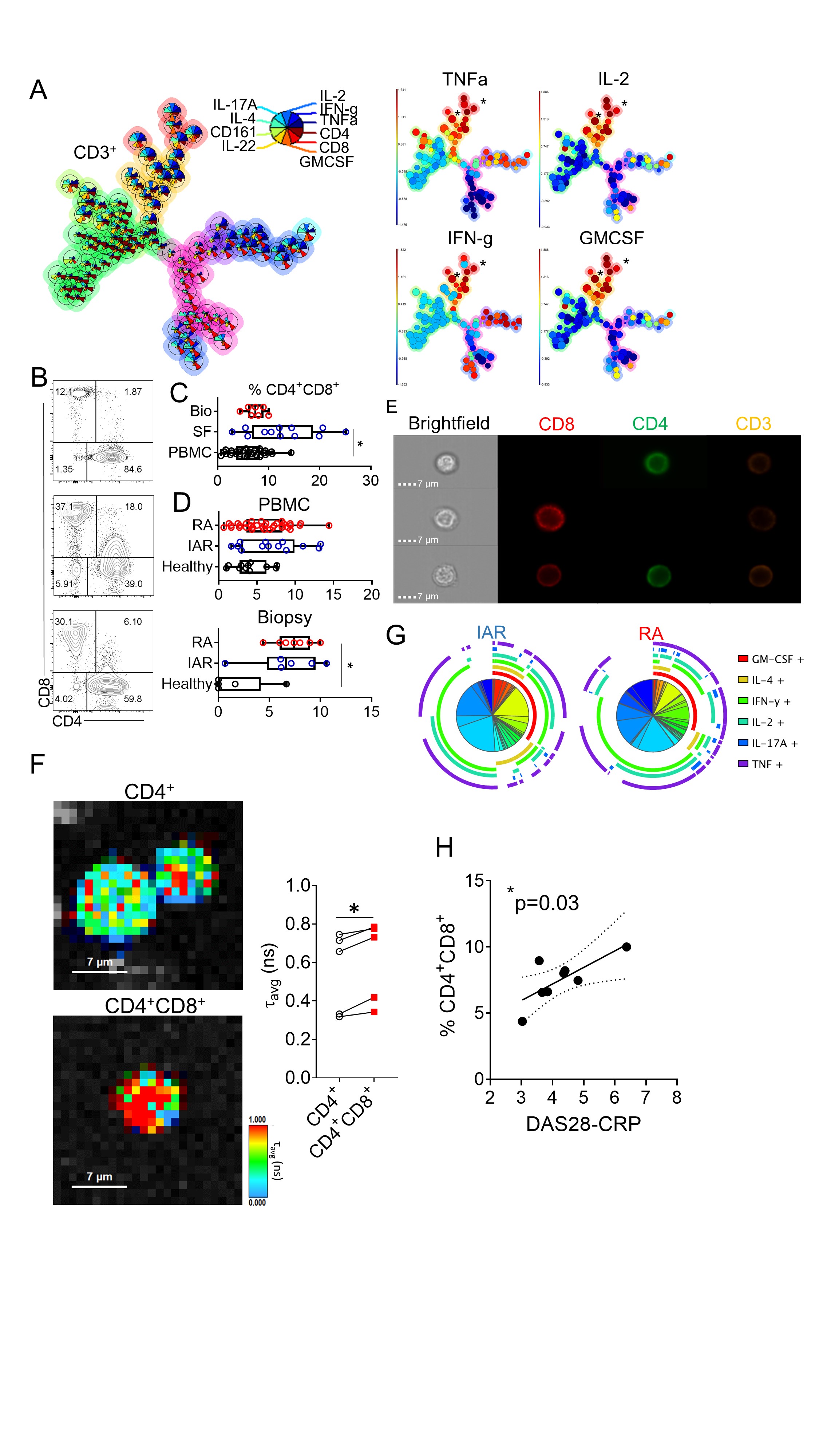Session Information
Date: Sunday, November 7, 2021
Title: Abstracts: T Cell Biology & Targets in Autoimmune & Inflammatory Disease (0966–0969)
Session Type: Abstract Session
Session Time: 11:15AM-11:30AM
Background/Purpose: Effective treatment of Rheumatoid arthritis (RA) patients is achievable within a short window of opportunity. T-cells are early drivers of synovial inflammation of RA, therefore, identification of pathogenic T-cell subsets at the synovial tissue of pre-RA, individuals at risk (IAR), would greatly improve our understanding of disease pathogenesis. Comparative analysis of healthy control, IAR subject and RA-patient derived synovial tissue T-cell responses will lead to the identification of pathogenic as well as protective cytokine milieu, thus enabling the identification of early therapeutic targets to help steer the immune response towards resolution.
Methods: Synovial biopsies from RA, IAR and HC by arthroscopic surgery followed by RNAseq analysis (Guo et al., PLoS One, 2018). Single cell synovial tissue cell suspensions from RA, IAR and HC and paired PBMC were stimulated in vitro and polyfunctional synovial T-cell subsets examined by flow cytometric analysis, SPICE visualization and FlowSom clustering. Flow-Imaging, was utilised to confirm T-cell cluster identification. Fluorescent Lifetime Imaging Microscopy (FLIM) was used to visualise metabolic status of specific T-cell populations.
Results: T-cell associated pro-inflammatory gene pathways were increased in RNAseq analysis of RA-patient and IAR compared to HC synovial tissue biopsies. Flow cytometric analysis of pro-inflammatory cytokine (TNF-a, IFN-γ, IL-2, GM-CSF, IL-17A, IL-22) production and SPICE analysis of ex vivo stimulated T-cells revealed marked polyfunctionality of IAR synovial T-cells, thus providing evidence for a dysregulated synovial T-cell response that pre-dates clinical onset of disease. Importantly, HC synovial tissue harbours a small, albeit surprisingly polyfunctional, CD4 T-cell population characterised by significantly increased IL-4 and GM-CSF cytokine production compared to arthralgia subject (P< 0.001 and P=0.01) and RA-patient (P< 0.001 and P=0.004) synovial tissue. However, not all polyfunctional T-cells are equal in their pathogenic potential. Therefore, in order to identify highly pathogenic synovial T-cells, cluster analysis of flow cytometric data using the unsupervised algorithm FlowSom was performed and led to the identification of specific T-cell clusters with unique polyfunctionality characteristics. Specifically a cluster of CD4+CD8+ double positive (DP) T-cells with high polyfunctionality scores was identified. Hybrid flow cytometry and imaging technique confirmed the co-expression of CD4 and CD8 by a synovial T-cell population. DP T-cells are enriched in RA-patient synovial fluid and synovial tissue and IAR synovial tissue, but are absent from HC synovial tissue. Importantly, DP T-cell synovial accumulation strongly (P=0.002) correlates with DAS28(CRP) of RA-patients. Utilisation of the novel, non-invasive FLIM technique for visualisation of cellular NAD, revealed that DP T-cells have a metabolic profile indicative of activated memory T-cells.
Conclusion: These data highlight a key early loss of balance between protective and pathogenic synovial T-cell polyfunctionality and the emergence of specific, highly polyfunctional and pathogenic T-cell clusters in RA.
To cite this abstract in AMA style:
Floudas A, Neto N, Orr C, Canavan M, Gallagher P, Hurson C, Monaghan M, Sunil N, Mullan R, Veale D, Fearon U. Loss of Balance Between Protective and Pro-inflammatory Synovial Tissue T Cell Polyfunctionality Predates Clinical Onset of Rheumatoid Arthritis [abstract]. Arthritis Rheumatol. 2021; 73 (suppl 9). https://acrabstracts.org/abstract/loss-of-balance-between-protective-and-pro-inflammatory-synovial-tissue-t-cell-polyfunctionality-predates-clinical-onset-of-rheumatoid-arthritis/. Accessed .« Back to ACR Convergence 2021
ACR Meeting Abstracts - https://acrabstracts.org/abstract/loss-of-balance-between-protective-and-pro-inflammatory-synovial-tissue-t-cell-polyfunctionality-predates-clinical-onset-of-rheumatoid-arthritis/

